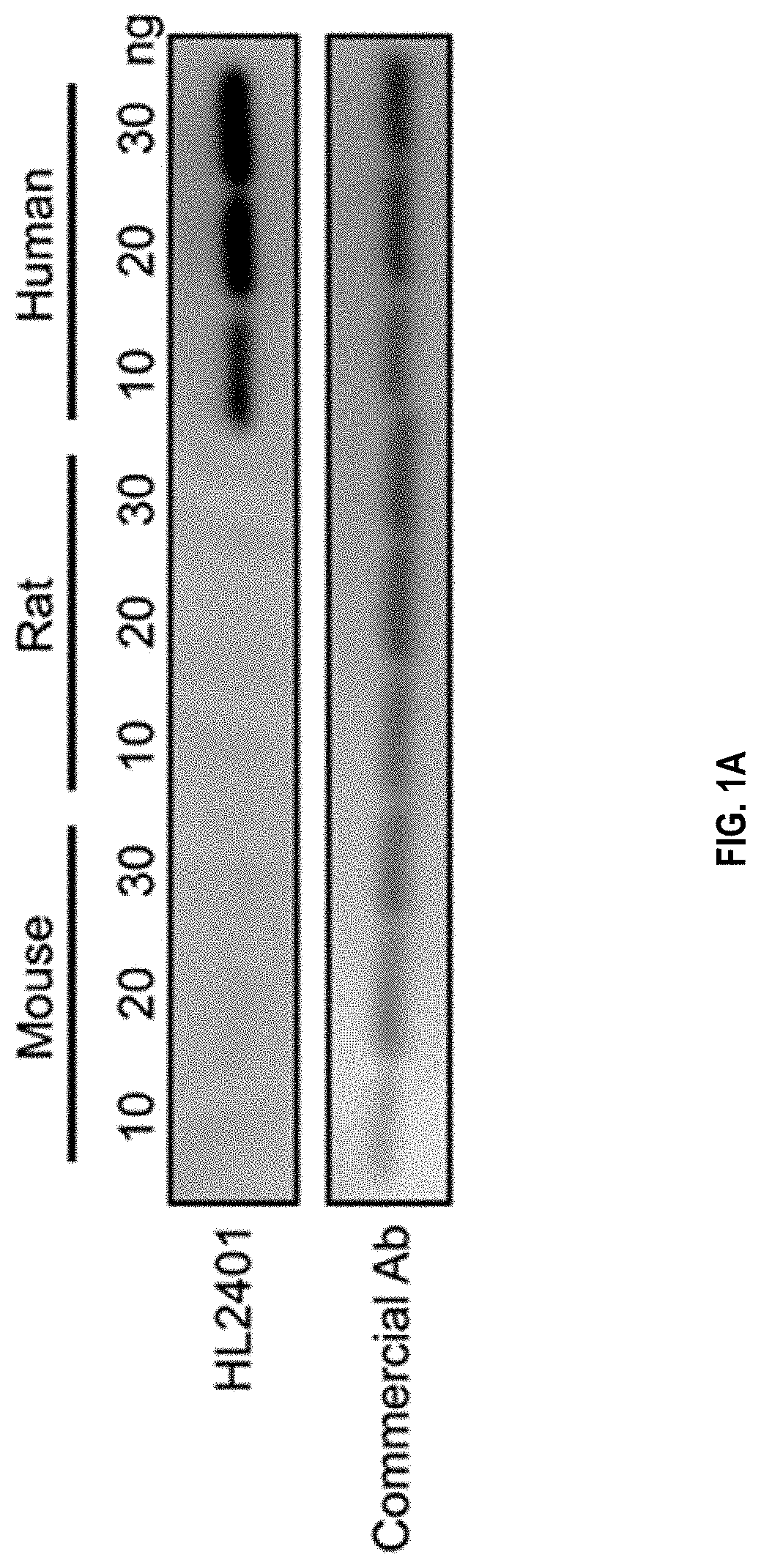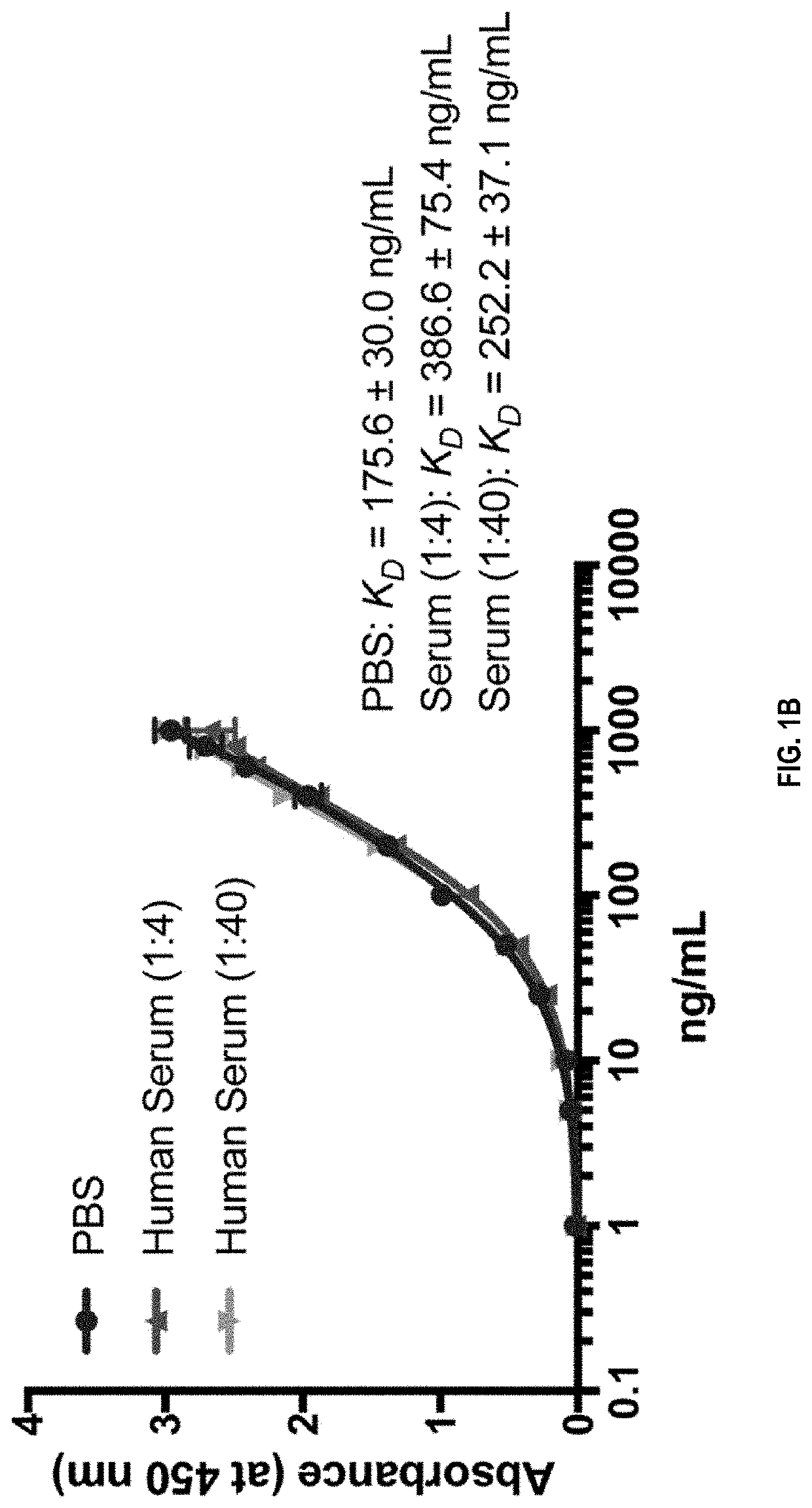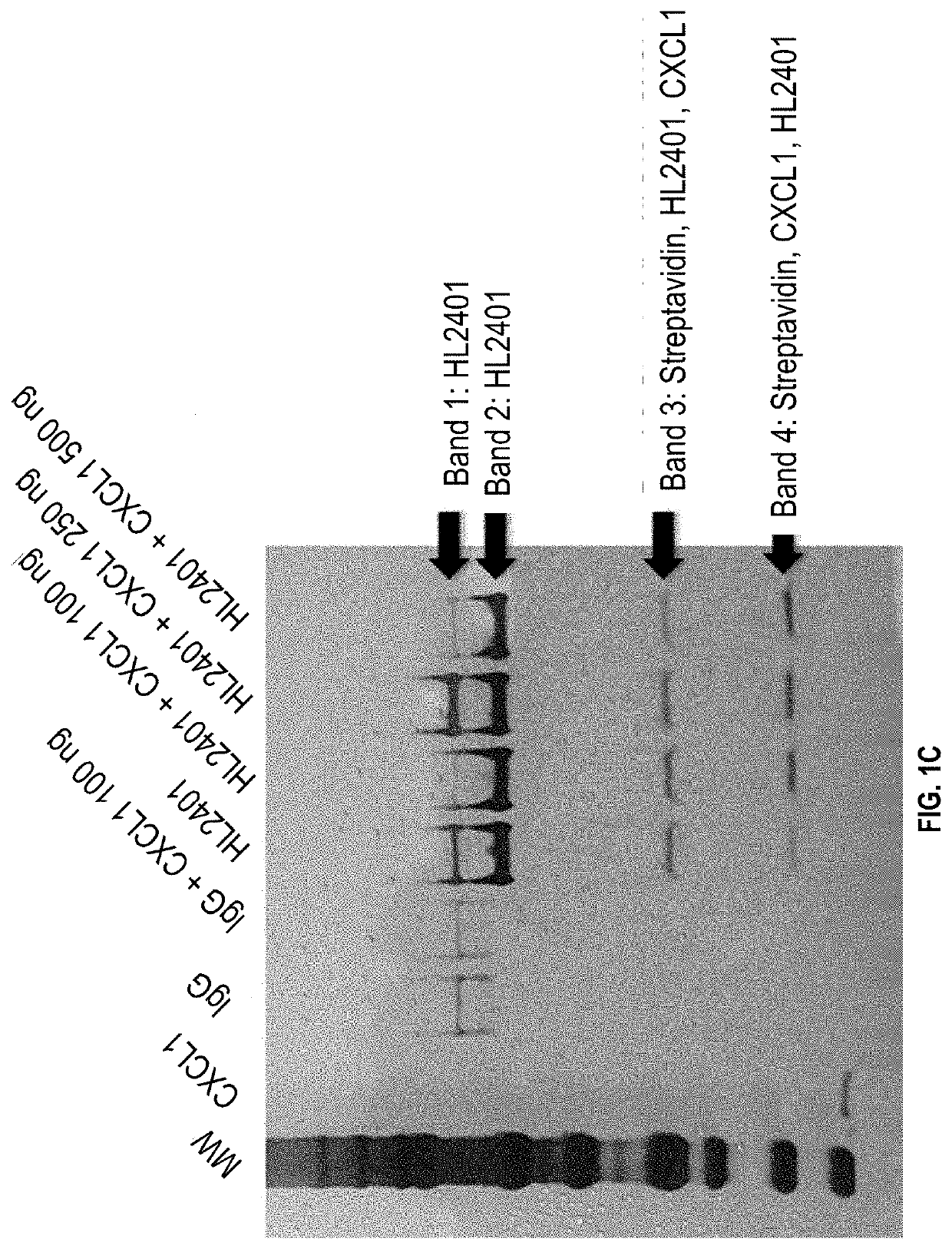Compositions and methods for treatment of diseases involving cxcl1 function
a technology of cxcl1 and antigen binding fragments, which is applied in the field of monoclonal antibodies against human chemokine cxcl1 or antigen binding fragments thereof, can solve the problem that the success of targeting vegf alone is only partially successful
- Summary
- Abstract
- Description
- Claims
- Application Information
AI Technical Summary
Benefits of technology
Problems solved by technology
Method used
Image
Examples
example 1
Preparation of Human Anti-CXCL1 Antibody
[0145]Balb / cByJ mice were immunized multiple times with human recombinant CXCL1 protein. The anti-CXCL1 antibody titers in mouse sera were determined by the ELISA assay. After high anti-CXCL1 antibody titer in serum was reached, spleens were dissected and splenocytes isolated to fuse with myeloma cells to generate hybridoma cells. The fused hybridomas were grown in selection medium to generate hybridoma clones.
[0146]A mouse monoclonal antibody against CXCL1 was produced using a standard protocol of the Hybridoma and Protein Core Laboratories, University of Florida Interdisciplinary Center for Biotechnology Research (ICBR) (Chang et al, 2013). Two female Balb / cByJ mice were immunized with approximately 100 μg of native CXCL1 protein having the amino acid sequence of ASVATELRCQCLQTLQGIHPKNIQSVNVKSPGPHCAQTEVIATLKNGRKACLNPASPIVKKII EKMLNSDKSN (SEQ ID NO: 5) diluted in sterile physiologic phosphate buffered saline (PBS) and emulsified in Ribi MPL+T...
example 2
[0170]FIGS. 2C, 2D, and 3A-3C show CXCL1 expression stimulates cell proliferation, cellular migration and invasion and endothelial tube formation.
[0171]To determine the effect of CXCL1 on key tumor cell and endothelial cell processes, human cell lines T24, DU145 and PC3 were first tested for their expression levels of CXCL1 and its receptor, CXCR2.
[0172]FIG. 2A shows bladder cancer cell line (T24) and prostate cancer cell line (PC3) express high levels of CXCL1. On the other hand, CXCR2, the receptor for CXCL1, was highly expressed in T24 cells.
[0173]To test the effect of CXCL1 expression on cellular functions, tumor cell lines, e.g., DU145, which do not express detectable CXCL1, were stably transfected with CXCL1 to generate CXCL1-expressing tumor cells. On the other hand, tumor cell lines, e.g., T24 and PC3 cells, which highly express CXCL1, were stably transfected with CXCL1-targeting shRNA vectors to knockdown their endogenous CXCL1 expression. Plasmids with sequence verified hu...
example 3
Targeting CXCL1 Inhibits Proliferation, Cellular Invasion and Endothelial Tube Formation
[0179]To test whether CXCL1 inhibitors, such as anti-CXCL1 neutralizing monoclonal mouse antibody (HL2401), could affect proliferation, a cell proliferation assay was performed. Briefly, 103 cells (T24, DU145, and PC3) per well were plated in 96-microwell plates and incubated for 6, 24, 48 and 72 hours with the indicated concentration of HL2401 for 72 hrs. Each condition was tested in triplicate wells. Cell proliferation was determined by incorporation of 3-(4,5-dimethylthiazol-2-yl)-2,5-diphenyltetrazolium bromide (MTT). At least three independent experiments were performed in triplicate.
[0180]FIG. 3A shows, in an in vitro proliferation assay at 72 hours, proliferation of T24, PC3, and HUVEC cell lines, but not DU145 cells, were significantly inhibited by HL2401 (20 and 100 μg / mL). The anti-CXCL1 mAb can completely block CXCL1-induced HUVEC proliferation and sprouting.
[0181]To test whether anti-...
PUM
| Property | Measurement | Unit |
|---|---|---|
| equilibrium dissociation constant | aaaaa | aaaaa |
| wavelength | aaaaa | aaaaa |
| pH | aaaaa | aaaaa |
Abstract
Description
Claims
Application Information
 Login to View More
Login to View More - R&D
- Intellectual Property
- Life Sciences
- Materials
- Tech Scout
- Unparalleled Data Quality
- Higher Quality Content
- 60% Fewer Hallucinations
Browse by: Latest US Patents, China's latest patents, Technical Efficacy Thesaurus, Application Domain, Technology Topic, Popular Technical Reports.
© 2025 PatSnap. All rights reserved.Legal|Privacy policy|Modern Slavery Act Transparency Statement|Sitemap|About US| Contact US: help@patsnap.com



